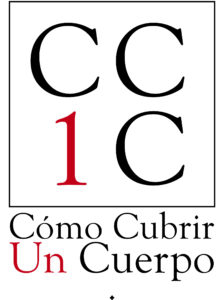Originally published on March 4, 2013

The Academy of Ignorance 2
“More light!” J.W.Goethe, March 22, 1832
Introduction
If anyone was surprised by the previous post (The Academy of Ignorance 1) or thought the story was exaggerated, today I will share three emblematic examples of the methods used by the director of that academy.
1. The Transformation of the Chest Dart
As we know, the chest dart is an angle drawn on the front pattern block that determines chest volume. The larger the angle, the more prominent the chest shape. This volume becomes visible when the garment is sewn.
It’s possible to reposition the dart by opening it wherever desired and closing the original. The dart can also be concealed within a seam or split across multiple seams or darts.
However, at the Academy of Ignorance, the director claims to know how to make the chest dart completely disappear, leaving a seamless and dartless front (except for the side panel), while still perfectly fitted — and without using stretch fabric.
She asserts that a famous fashion brand with a professional pattern-making department once sought her help to develop the first fully fitted women’s shirt with no darts on the front. They turned to her for her “magic,” and she supposedly created the miraculous pattern. Yet, she always says she needs to “find it again,” and somehow the miracle is perpetually misplaced.
If someone truly discovered how to shape a cone on a flat surface without subtracting a circular section — in other words, how to fit a bust without a dart — they would have revolutionized geometry and been featured on the covers of every scientific journal. That hasn’t happened.
If such a magic pattern had ever existed, wouldn’t someone have copied it already? Would designers really keep sewing darts and opening seams that increase production costs? Let’s be serious.
2. Seam Allowances and Ironing
The director advises leaving 3 to 5 cm of seam allowance in case adjustments are needed — even after drafting the pattern using actual body measurements. With just two seams, a garment could have a total of 6 to 10 cm of extra fabric, enough to jump up two full sizes. At this point, one might ask: why draft a pattern at all?
In a women’s jacket with four pieces, that’s 35 cm of added width, plus another 10 cm from the front panels — 45 cm total. That’s nearly half the chest circumference in seam allowances!
She also recommends keeping all seams intact. But how do you open a chest dart with 5 cm of excess fabric? If you notch it, the allowance loses its function.
And when it comes to ironing? Never use steam — it might stain the fabric. Instead, use spray starch, and only iron the fabric if it’s visibly wrinkled.
Seam edges are not trimmed or finished — everything is basted unless it’s fast fashion. But if you’re basting everything, what’s the point of measuring 3 to 5 cm of seam allowance?
3. The Patterns
According to the director, having ready-made bases is useless: it’s better to draft them from scratch every time. So if she does two pattern transformations in a day, she drafts the same base twice.
She uses colored paper, glues pieces together, and secures them with tape. She only tests half of the pattern — instead of making a muslin test garment — despite having fully functioning sewing machines at her disposal… machines which, in the meantime, are dying of boredom.
Speaking of machines: she doesn’t oil them — to avoid staining the fabric. And how do you wind a bobbin? Leave a bit of tangled thread inside, or else, she says, “the thread slips.”
Conclusion
Clearly, this type of teaching is not serious. The worst part is that many students trust this academy with real hope. They make financial sacrifices, but spend years learning just three base patterns and a few basic alterations.
Time passes for everyone, and it cannot be reclaimed. Students who truly want to enter the fashion industry are wasting it here, nurturing dreams instead of building skills.
